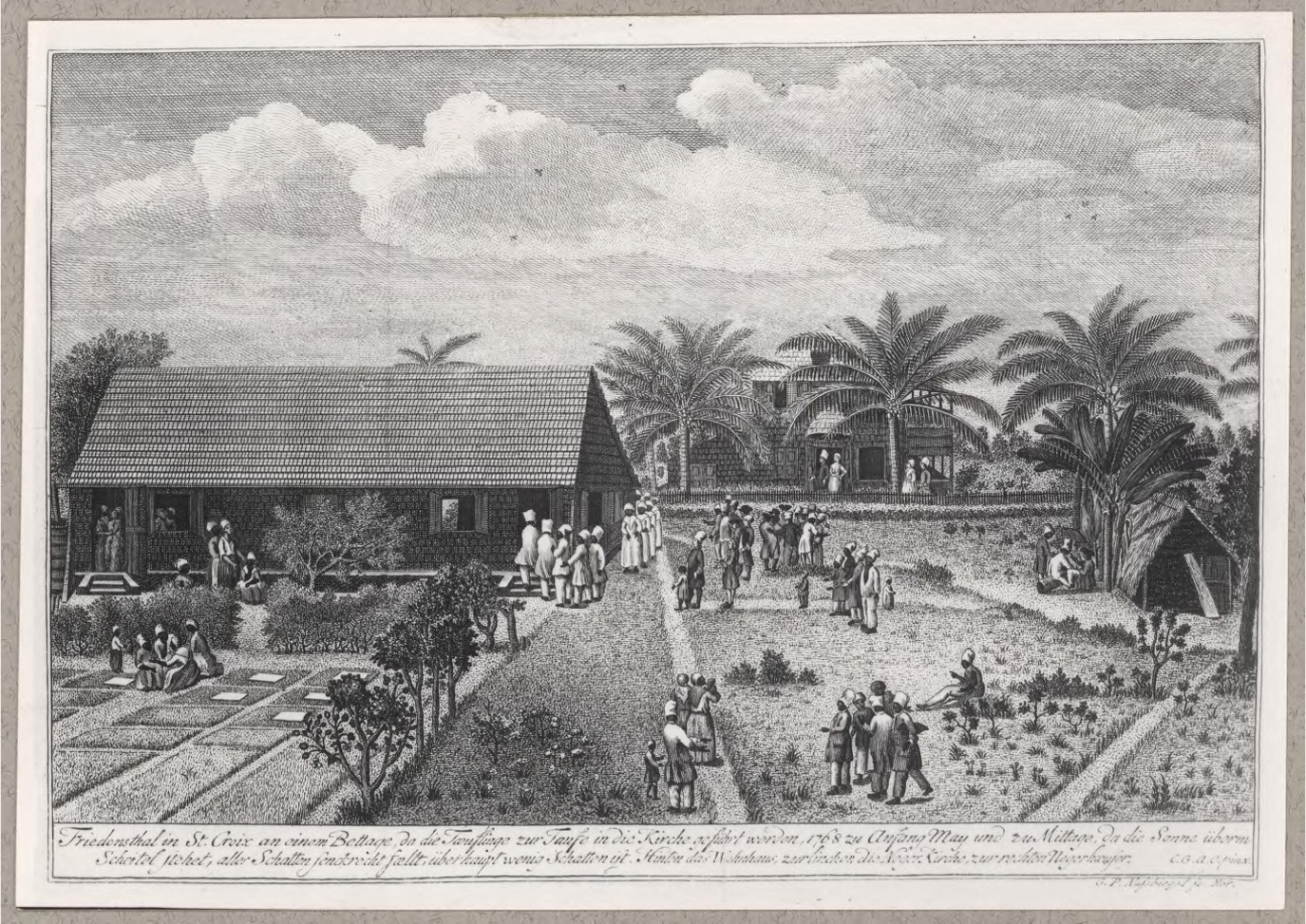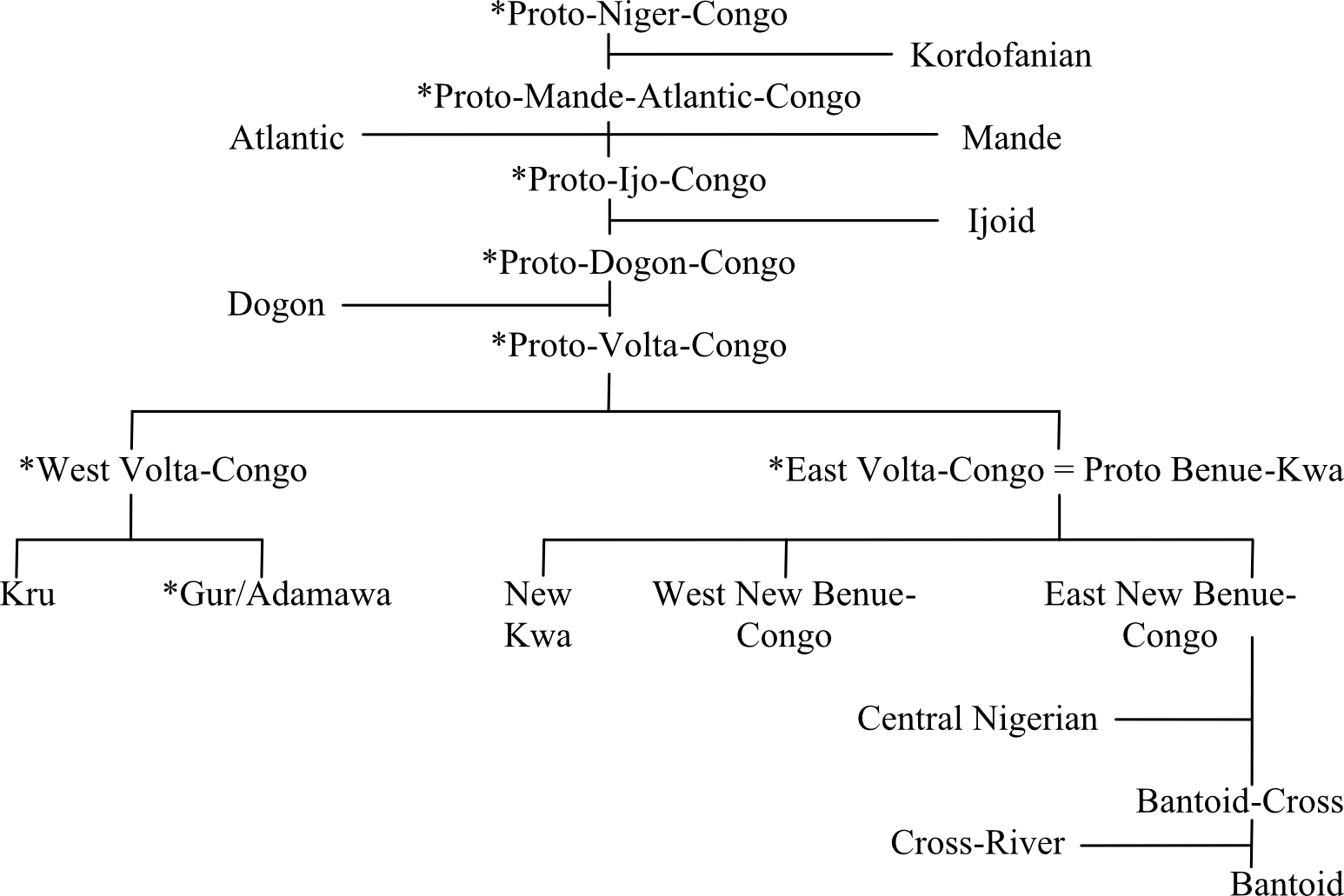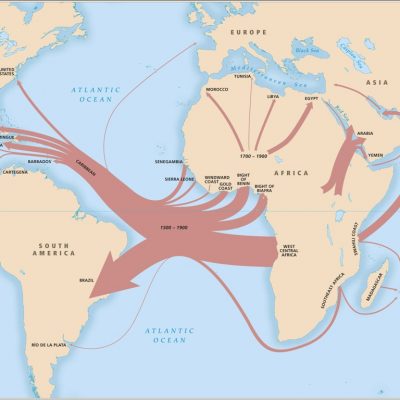Most of the Danish West Indian population during the colonial era did not come from Denmark, but had African roots. Even though the African languages only survived as traces in the creoles of the islands, we know that they were used (recessively) in the Virgin Islands for centuries. Danish slave ships transported around 100,000 Africans to the West Indies between 1673 and 1807, and census data from the Danish National Archives (Rigsarkivet) shows that in 1841 – just seven years before the emancipation – close to 10 percent of the unfree population on Saint Croix was born in Africa.
So, which African languages were spoken in the former Danish West Indies?
Since there are somewhere between 1,500 and 2,000 African languages, that question might seem impossible to answer. However, it is possible to outline the historical language composition of the islands from the plentiful sources that have been preserved from the colonial era.
A hint is found in the documentation of the transatlantic slave trade. Since the Danish forts were on the Gold Coast (present-day Ghana), it could seem reasonable to assume that the Danish West Indian slaves came from this part of Africa, where especially Akan and Gbe languages – such as Twi, Ewe, and Gã – are (and were) prevalent. However, that is not the full picture. As plantation owner J. L. Carstens wrote in 1740 about the enslaved people on Saint Croix, there were “as many nations […] among them, as there are landscapes, cities and places in America and […] in Africa”.
When Carstens refers to “nations”, he isn’t using the word in its modern sense. In the field of linguistics, we would call these ethnolinguistic groups. But the quote certainly suggests a mixed population. Data from a www.slavevoyages.org, a comprehensive online archive of two-thirds of the documented transatlantic slave trade between 1514 and 1866 (almost 35,000 voyages), support his observation: The Danish West Indian slaves were shipped from an area encompassing several thousand kilometers of the African coast.
Obviously, there are no tape recordings of the languages of the enslaved people, but there are records from the 1700s that shed light on the language composition.

We can get an impression of the languages of the slaves by reading the descriptions written by missionaries. Missionaries from the Moravian Church were in the Caribbean from 1732 and were especially active and influential on the Danish-owned islands. They left a considerable paper trail.
The German missionary C. G. A. Oldendorp visited the Virgin Islands in 1767-1768, which resulted in a depiction of the history of the islands and the missions – including the slaves’ way of life and cultural affiliation. In 1777 Oldendorp’s work was published in a abbreviated(!) edition consisting of 1,100 pages titled Geschichte der Mission der evangelischen Brüder auf den caraibischen Inseln S. Thomas, S. Croix und S. Jan. An excerpt was published in Danish in 1784. In 2000-2002, the whole original manuscript was published – in four volumes of 3,000 pages in total.
Oldendorp conducted a series of group interviews with Danish West Indian slaves and registered fragments of around 20 different African languages that they used. He collected, among other words, the numbers ‘one’ to ‘ten’ in the different languages. Oldendorp’s systematic approach makes it possible to match the numerals with modern data and thus names of languages. I have compared Oldendorp’s numerals with data from the Max Planck Institute’s database Numeral Systems of the World’s Languages, which contains a catalog of numerals with phonetic transcriptions from about 4,000 of the world’s approximately 7,000 languages. Oldendorp collected words with meanings such as ‘sun’, ‘sky’ and ‘mouth’, which can be used to strengthen the basis of comparison further.
The following table gives two examples, where numerals from Oldendorp’s two “nations” Watje and Mokko are compared to modern data from the languages Aja (Benin) and Efik (Nigeria).
| ’Watje’ | = Aja | ’Mokko’ | = Efik | |
| 1 | de | eɖé | kiä | kíét |
| 2 | ewee | èvè | iba | íbá |
| 3 | etong | etɔ̃̂ | itta | ítá |
| 4 | enne | enɛ̀ | inan | ínáŋ |
| 5 | attong | atɔ̃ | üttin | ítíón |
| 6 | andee | adɛ̃ | itjüekee | ítíókíét |
| 7 | anderee | adɾɛ | ittiaba | ítíábá |
| 8 | enni | eɲĩ | itteiata | tíáitá |
| 9 | enjidee | ɲíɖe | huschukiet | úsúk-kíét |
| 10 | owoo | ewó | büb | dúóp |
The following map shows the geographical distribution of the African languages that we can prove to have been represented in the West Indies in the 1700s on the basis of the comparison. The ID codes in brackets have been inserted to precisely identify the languages, which can all be found on www.glottolog.org.

The languages are from an area stretching from modern day Senegal to Angola – more than 4,000 kilometers. Most languages originate from the coast stretching from Ghana to Benin, but there are also Nigerian and Central West African languages from the western Guinea Coast. The languages are traditionally classified as members of the large Niger-Congo family in the following subgroups: North Atlantic; Mande; Gur; Kru; Kwa (Potou-Tano, Gbe, Gã-Dangme); Benue-Congo (Yoruboid, Cross-River, Igboid, Bantu).
A glance at the language tree below can help give an impression of the great diversity that the different subgroups represent.

The Danish West Indies in the 1700s were characterized by many different African languages, whose identities are now a bit clearer. Oldendorp’s description remains a unique source, which even after 250 years can shed light on the early language composition of the Virgin Islands – and that on basis of words from people that have never otherwise been heard.
Kristoffer Friis Bøegh works at Aarhus University, where he researches the English-based creole spoken on Saint Croix in the Caribbean.
This post was translated from Danish by Timon Holm and Hannah Fedder Williams.
Cover picture: Overview of the African slave trade, 1500-1900. Source: http://www.slavevoyages.org








1 thought on “African languages in the 1700s Danish West Indies”